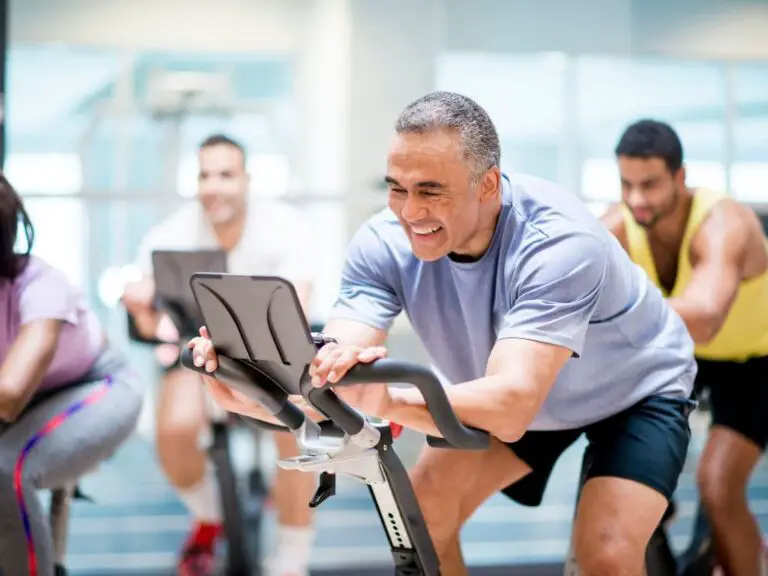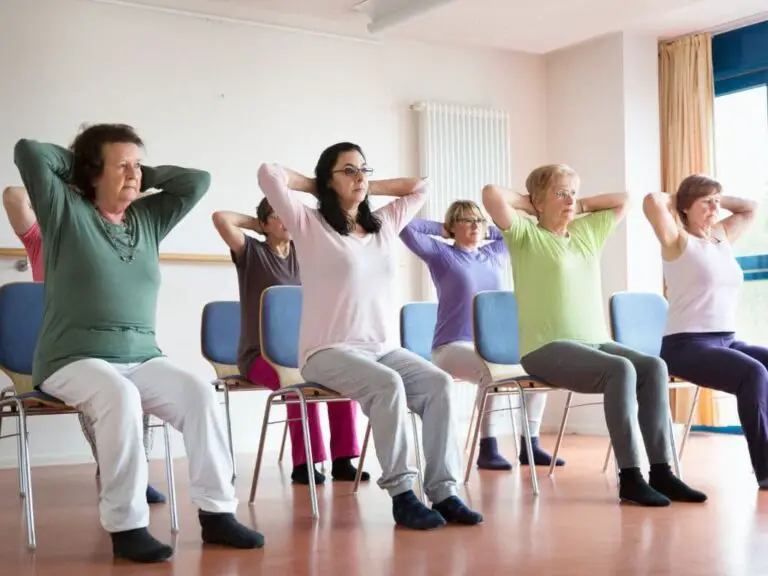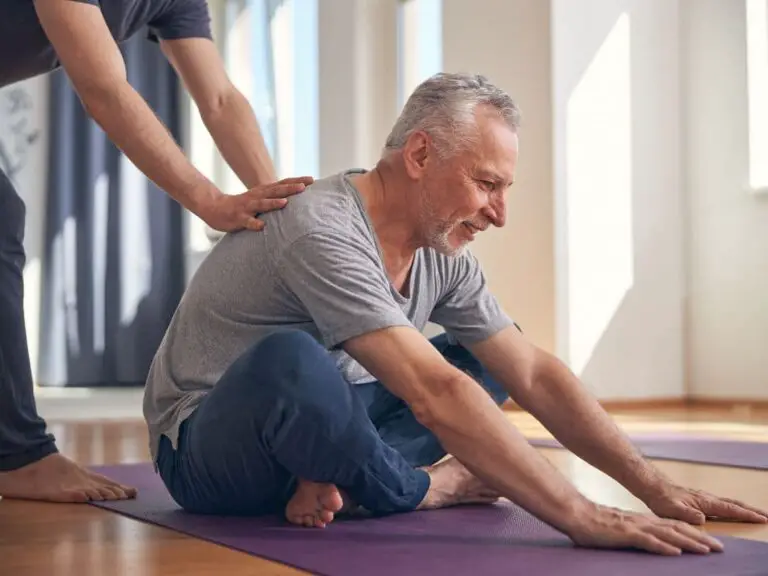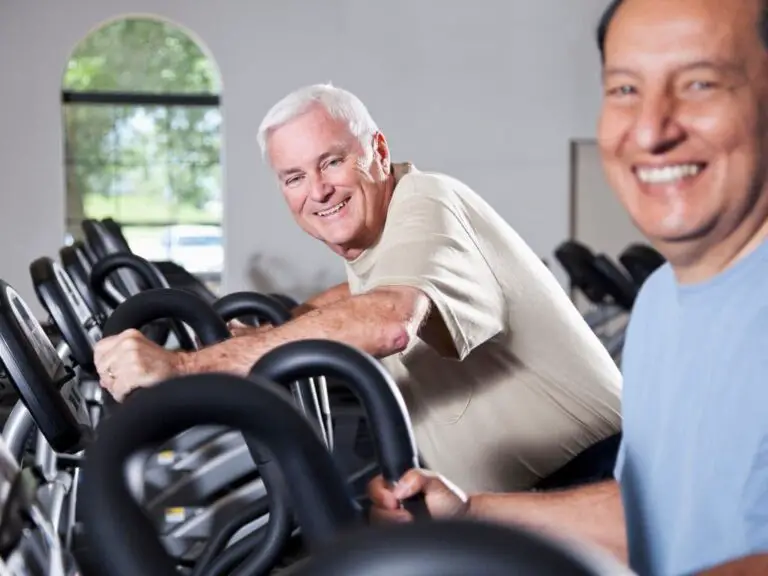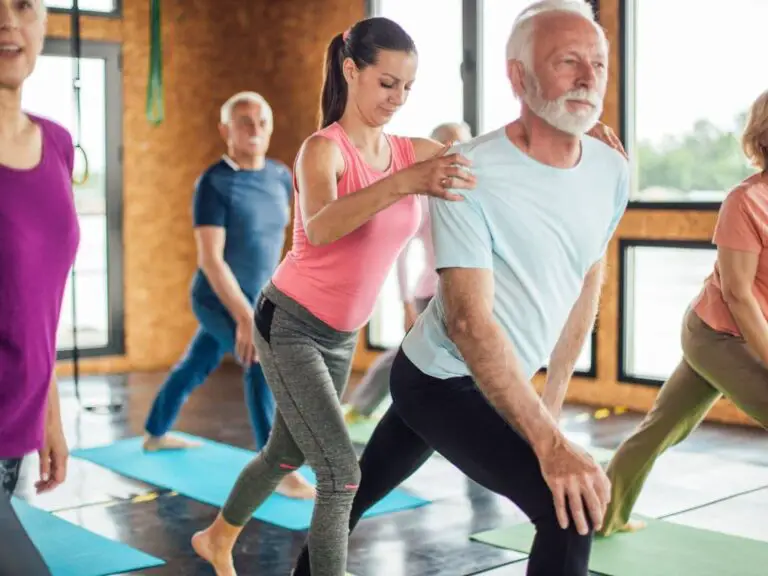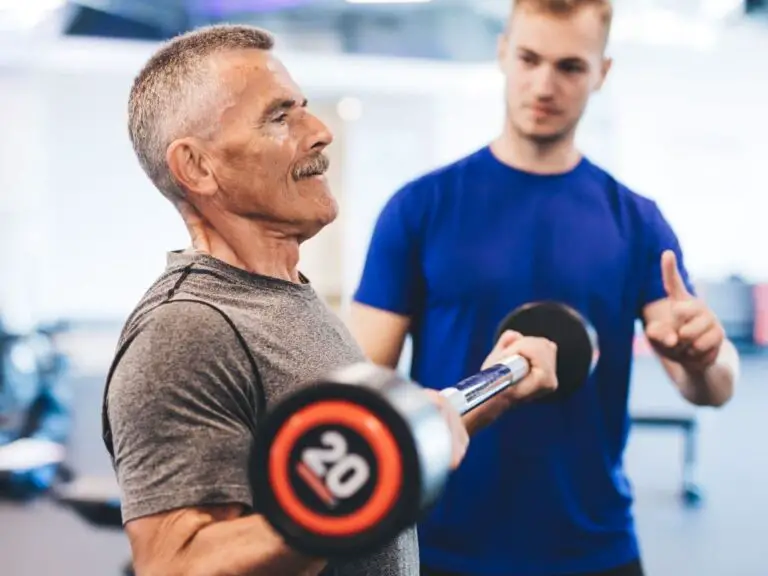Exercises for Seniors to Reduce Hanging Stomach: A Comprehensive Guide
A hanging stomach, also known as a pot belly or muffin top, is a common concern for many seniors. As we age, abdominal muscles naturally weaken and lose core strength, while weight gain and poor posture can also contribute to extra fat around the midsection.
To stop a hanging stomach, engage in regular exercise such as seated leg lifts, chair squats, and walking. Perform strength training and core exercises 2-3 days per week. Complement this with a diet rich in fiber and lean proteins while limiting processed foods. Also, improve posture, manage stress, quit smoking, and ensure adequate sleep.
The good news is that with the right diet and exercise regimen, seniors can reduce hanging stomach fat and regain a flatter, firmer belly.

What Causes a Hanging Stomach in Seniors?
There are several factors that can lead to the development of hanging stomach fat as we get older:
Age-related muscle loss – Our muscles naturally lose strength and mass with age, starting as early as our 30s. This includes the abdominal muscles, which weaken over time and are less able to hold in stomach fat.
Weight gain – Many seniors gradually gain belly fat over the years due to slowing metabolism, decreased activity, and other lifestyle factors. Excess fat can hang over the waistband, creating a protruding stomach.
Loss of skin elasticity – Aging skin becomes less supple and elastic. This allows abdominal fat to push outward, creating a hanging appearance.
Posture changes – Poor posture, often from osteoporosis, forces the stomach outward, making it appear larger. Weak core muscles exacerbate this effect.
Menopause – Hormonal changes during menopause shift body fat storage toward the abdomen. This creates more fat deposits for older women around the midsection.
How Can Exercise Help Reduce a Hanging Stomach in Seniors?
Regular exercise offers many benefits for getting rid of excess stomach fat as we age:
- It builds muscle, especially in the core region. Stronger abdominal muscles provide more support, keeping stomach fat from sagging.
- It improves posture by strengthening the back, core, and pelvic muscles. Good posture pulls the belly in, reducing the hanging appearance.
- It burns calories to eliminate belly fat stores. Aerobic activity paired with strength training is ideal.
- It boosts metabolism so the body continues burning calories efficiently, making it easier to maintain a healthy weight.
- It enhances circulation, which improves skin tone and elasticity over time for a firmer looking stomach.
What Are Some Effective Exercises for Reducing a Hanging Stomach in Seniors?
There are many great low-impact exercises seniors can do to lose hanging stomach fat and sculpt a firmer midsection. Try incorporating a few of these into your regular routine:
1. Seated Leg Lifts
This simple move targets the lower abdominals while putting minimal strain on the back. Sit upright near the edge of a chair. Extend your legs out at a 45 degree angle and raise one leg a few inches off the ground, engaging your core. Slowly lower and repeat 10 times per leg.
2. Chair Squats
Squats utilize bodyweight to tone abs and thighs. Stand in front of a chair and lower yourself down until you gently touch the seat. Press back up to starting position. Keep your back straight. Do 10-15 reps for 1-2 sets.
3. Seated Russian Twists
Sitting up tall, extend your legs forward with knees bent. Hold your hands together and twist your torso to one side, feeling the contraction in your obliques. Twist back to center and repeat on the other side. Do 10-15 reps per side.
4. Seated Bicycle Crunches
This exercise combines a crunch and cycling motion for serious ab-burn. Sit with knees bent, feet lifted. Bring opposite elbow to knee as you cycle legs. Keep the motion continuous for 30 seconds. Repeat for 2-3 sets.
5. Standing Side Bends
Stand with feet hip-width apart. Reach one arm over your head and slowly lean sideways, stretching to the opposite side. Hold for a few seconds, then slowly rise back up. Complete 10-15 reps then switch sides.
6. Walking or Light Jogging
One of the best forms of aerobic exercise for seniors is brisk walking or jogging. Shoot for 30-60 minutes most days of the week to elevate your heart rate and burn calories.
7. Swimming or Water Aerobics
The water provides cushioning and support for joints while also providing resistance. Swimming laps or joining a senior water aerobics class can strengthen and tone.
8. Yoga or Pilates for Seniors
Gentle forms of yoga and Pilates improve core strength, flexibility, posture, balance, and mind-body awareness. Try senior-friendly classes or YouTube videos.
Safety Tips When Exercising as a Senior
It’s important to keep these safety tips in mind as you incorporate hanging stomach exercises into your routine:
- Always consult your doctor before significantly increasing physical activity
- Warm up for 5-10 minutes before each workout and cool down afterward
- Focus on proper form and move through exercises slowly
- Avoid straining or holding your breath during abdominal exercises
- Only do what feels comfortable – no pain should be felt
- Listen to warning signs like chest pain, dizziness, etc. and stop immediately
- Stay hydrated before, during, and after exercise
- Use support like a chair or wall for balance if needed
How Often Should Seniors Exercise to Reduce a Hanging Stomach?
Experts recommend:
- Aerobic activity like brisk walking or swimming 30-60 minutes per day, 5 days a week
- Strength training targeting major muscle groups 2-3 days per week
- Core exercises like those listed above 2-3 days per week
Consistency is key – aim to develop an exercise habit through your weekly schedule. Peroiodic rest days are encouraged to allow your body to recover.
Can Diet Help Reduce a Hanging Stomach in Seniors?
Along with exercise, diet plays a major role in reducing abdominal fat. Be sure to:
- Eat plenty of fiber from fruits, vegetables, beans, and whole grains
- Prioritize lean protein sources like fish, chicken, Greek yogurt and eggs
- Stay hydrated by drinking water throughout the day
- Limit processed foods, sugar, saturated fats, and sodium
- Avoid large portions and grazing between meals
Making smart dietary choices complements an effective exercise regimen for losing hanging belly fat.
What Are Some Other Ways to Help Reduce a Hanging Stomach in Seniors?
Aside from adding exercise and improving diet, a few other tips can help tighten a saggy senior stomach:
- Improve posture by standing up straight with shoulders back
- Do abdominal bracing by pulling the belly button toward the spine
- Wear shapewear or compression garments during the day
- Try skin-firming creams with ingredients like collagen or elastin
- Quit smoking to prevent further skin damage
- Manage stress through relaxing activities like yoga, deep breathing, or meditation
- Get adequate sleep, as sleep deprivation can increase belly fat
By combining various exercises, dietary changes, and lifestyle habits, seniors can successfully reduce an unwanted hanging stomach. With commitment and consistency, a flatter, more toned abdominal area is certainly achievable. Be sure to consult your physician before making major changes.
Frequently Asked Questions
-
How can I stop my hanging stomach?
To stop a hanging stomach, engage in regular exercise that strengthens the core and burns calories, such as seated leg lifts, chair squats, and walking. Complement this with a diet rich in fiber and lean proteins while limiting processed foods. Also, improve posture, manage stress, get adequate sleep and consider skin-firming creams.
-
How much should a 65 year old woman exercise?
Adults 65 years and over need to exercise at least 150 minutes per week. This could be 30 minutes each day or 5 days a weeks of moderate activity like walking. They also need to do 75 minutes per week of intense activity like running, jogging or hiking.
-
What are the odds of living to 70?
43 percent of the world’s population now lives into their 70s, compared to 33 percent 20 years ago. However, just because people live longer does not mean they are living better.
-
What is the best exercise for a 70 year old female?
Aerobic exercise is important for seniors. They need to get at least 2 hours of exercise each week, such as brisk walking. This is about 30 minutes most days. Walking, dancing and tennis are endurance exercises that improve your energy, breathing and heart rate. Stretching and yoga are great ways to stay flexible.
-
What exercise burns the most belly fat at home for seniors?
Crunches are the best exercise for burning stomach fat. When it comes to fat-burning exercise, crunches are the best. Start by lying flat on your back, with your knees bent. Your feet should be parallel to the ground. Place your hands behind your head by lifting them up.
-
Can you exercise away Crepey skin?
Crepey skin can be improved by exercise. Exercise can make our muscles stronger, longer and more tighter. This helps to firm the skin around them. Our muscles are more prominent, which can reduce the appearance of crepey, loose skin.
-
Can you firm up saggy arms?
While there are no quick fixes for arm fat, you can dramatically improve your appearance by combing specific exercises to tone and build muscle with a healthy diet and lots of cardio exercises.
-
What is a hanging stomach called?
Apron belly is also known as pannus stomach, mother’s pron or mom’s apron. It occurs when your belly and fat around the internal organs expands because of weight gain or pregnancy. This results in extra fat deposits in your omentum, which looks like an apron and lies under your abdominal muscles, and before your intestines.
-
Can exercise help sagging?
Weight training can be used to build muscle mass, which will help reduce the appearance of loose skin. This is especially true if it’s due to weight loss. The skin’s ability to shrink can be affected if excess fat is retained.
-
What percentage of 70 year olds are still working?
A little over one-fifth (18%) said that they would continue working beyond the age 70. This is an increase from 8% of those surveyed in 2019, while another 12% stated they have no plans to quit their full-time job, which was up from 6% of 2019.

